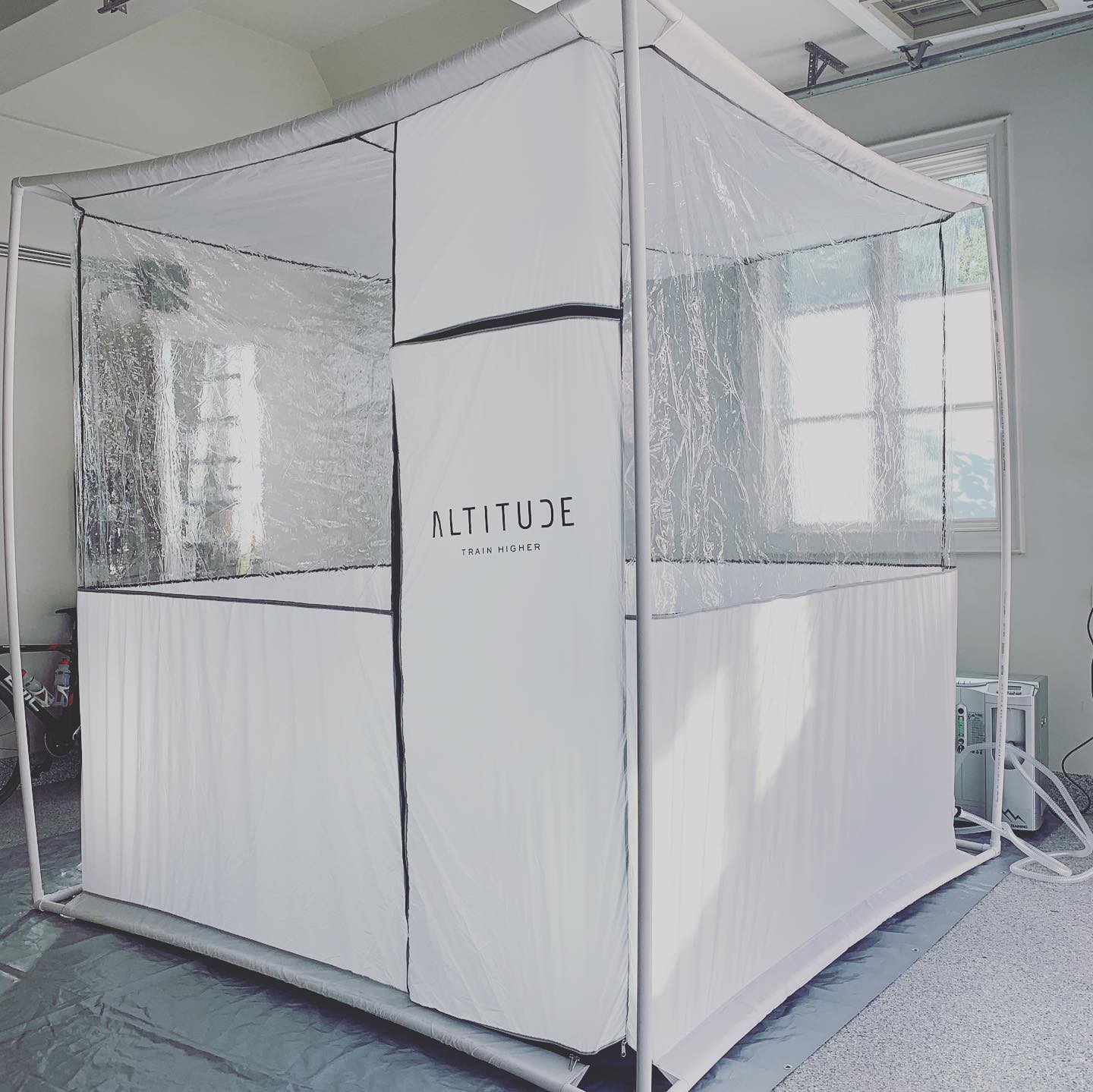Simulated altitude training, also known as hypoxic training, is a method of training that involves exposing the body to reduced oxygen levels in order to improve physical performance.
It is commonly used by athletes to improve their endurance and capacity for oxygen uptake, as well as by those living at sea-level to acclimate to the lower levels of oxygen present at high elevations.
There are several ways to do simulated altitude training, including the use of hypoxic tents or chambers and altitude simulation masks.
Hypoxic tents and chambers are enclosures that are designed to mimic the reduced oxygen levels found at high altitudes. They work by using a system of pumps and filters to remove oxygen from the air inside the enclosure, creating a hypoxic environment.

Altitude simulation masks, also known as “altitude masks,” can also be used to mimic the effects of altitude. These masks are connected to “altitude simulators,” which use a combination of pressurized air and oxygen to simulate the reduced oxygen levels found at high altitudes.

By simulating the conditions of high altitudes, the body can adapt and become more efficient at using oxygen, leading to improved athletic performance and other benefits such as:
1. Improved Oxygen Uptake and Utilization
Simulated altitude training can also lead to improved oxygen uptake and utilization. When an individual trains at simulated altitudes, their body becomes more efficient at using the oxygen that is available. This can lead to improved athletic performance, as the muscles are able to work harder and longer without becoming fatigued.
2. Increased Red Blood Cell Production
Another benefit of simulated altitude training is increased red blood cell production. Red blood cells are responsible for carrying oxygen to the muscles, and at high altitudes, there is less oxygen available. When an individual trains at simulated altitudes, their body responds by producing more red blood cells to help transport oxygen to the muscles. This can lead to improved oxygen delivery to the muscles, resulting in improved athletic performance.
3. Enhanced Muscle Strength and Endurance
In addition to the benefits mentioned above, simulated altitude training can also lead to enhanced muscle strength and endurance. This is because the body has to work harder to get the oxygen it needs to function, leading to an increase in muscle strength and endurance.
Overall, simulated altitude training is a useful tool for athletes and individuals looking to improve their overall health, physical performance and pre-acclimate to high altitude. To learn more about altitude training and training programs, please check out our website here Altitude Athletic Training or email us at info@altitudeathletictraining.com.
